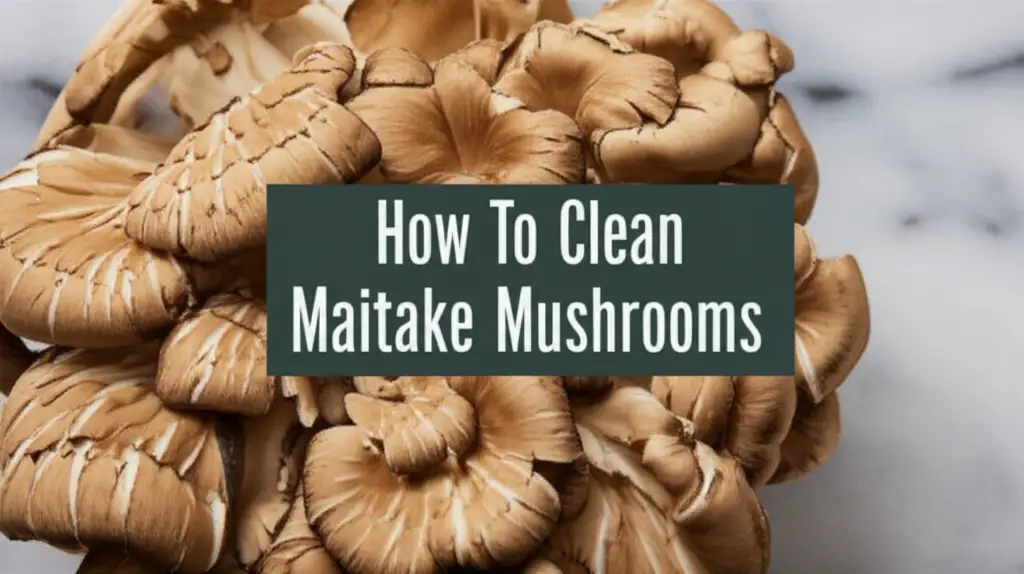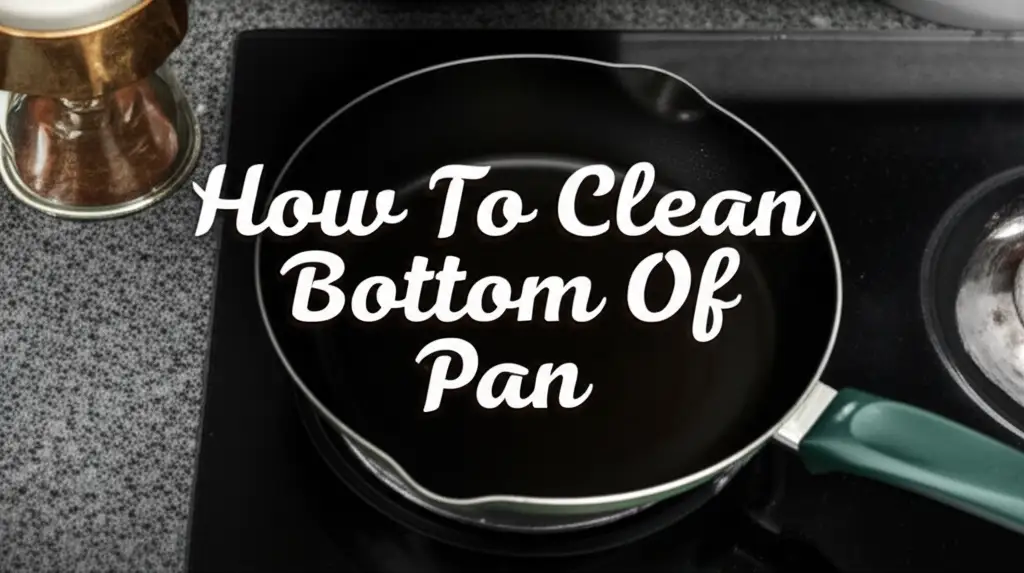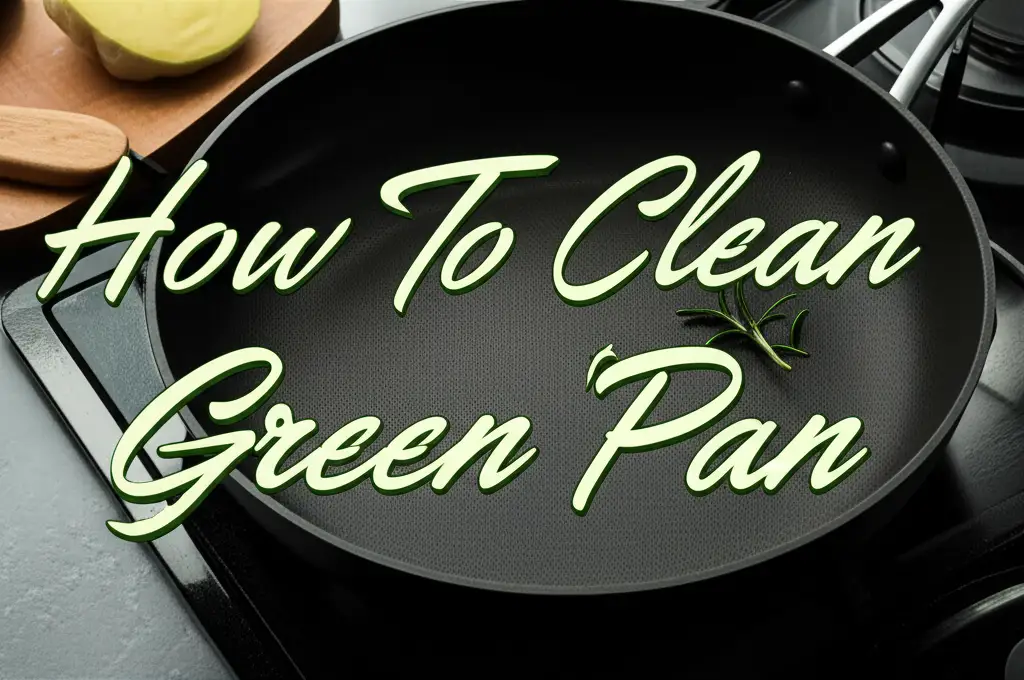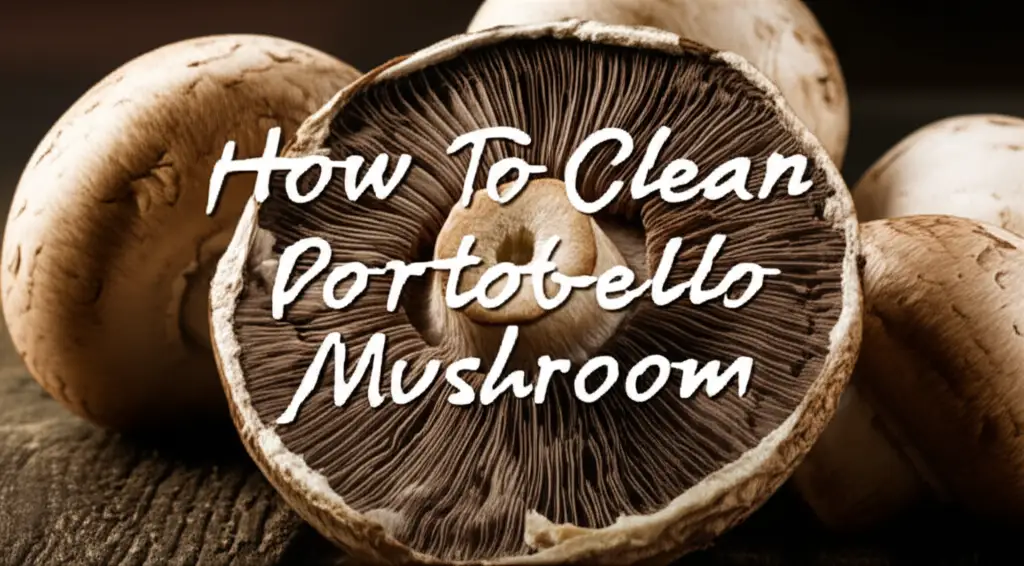· Kitchen Cleaning · 13 min read
How To Clean Fresh Mushrooms

Clean Fresh Mushrooms: A Complete Guide
Have you ever wondered how to clean fresh mushrooms effectively? Many people hesitate when it comes to preparing mushrooms, fearing they might absorb too much water. Cleaning fresh mushrooms properly is a simple step. It removes dirt and debris without compromising their delicate flavor or texture. This guide will show you the best ways to get your mushrooms ready for cooking. We will cover various techniques suitable for different mushroom types.
Proper mushroom cleaning is important for food safety. It also helps your dishes taste their best. You want your mushrooms to enhance a meal, not bring grit to the plate. Follow along to master this essential kitchen skill. We will provide clear, simple steps. This makes sure your fresh mushrooms are perfectly clean every time.
Takeaway
- Avoid soaking mushrooms: They act like sponges and absorb water, changing texture.
- Use a soft brush or damp cloth: Gently wipe away dirt for most common mushrooms.
- Trim dirty or tough parts: Cut off the very end of the stem if it looks dry or dirty.
- Clean just before cooking: This keeps mushrooms fresh longer.
- Store uncleaned mushrooms: Keep them in a paper bag in the fridge until ready to use.
To clean fresh mushrooms, gently wipe them with a damp paper towel or soft brush to remove dirt. Trim any tough stem ends. Avoid soaking mushrooms in water, as they absorb liquid quickly and can become soggy. This simple method preserves their natural flavor and texture for cooking.
Why Proper Mushroom Cleaning Matters for Your Cooking
Cleaning fresh mushrooms is not just about hygiene; it directly impacts your culinary results. Mushrooms grow in soil or on wood, so they often carry dirt, debris, or even small insects. Eating these unwanted bits with your meal is not appealing. A simple cleaning step removes all these impurities. This ensures a pleasant eating experience.
Beyond cleanliness, the method you use to clean mushrooms affects their texture. Mushrooms are very porous. They absorb liquids quickly, like sponges. If you rinse them under running water for too long, they can become waterlogged. This changes their texture from firm to rubbery. It also dilutes their natural, earthy flavor.
Proper cleaning preserves the mushroom’s integrity. It ensures they cook evenly and brown nicely. This brings out their deep umami taste. A clean mushroom cooks better and tastes better. It is a small step with a big impact on your final dish. We aim for delicious, perfectly cooked mushrooms every time.
Essential Tools and Supplies for Cleaning Mushrooms
You do not need many tools to clean fresh mushrooms effectively. Simple kitchen items work best. Having the right supplies makes the process easy. It also helps protect the mushrooms’ delicate structure. You likely already own most of these items.
First, you will need a soft mushroom brush. These brushes have very soft bristles. They gently sweep away dirt without damaging the mushroom’s surface. A clean, soft toothbrush works well as a substitute if you do not have a dedicated mushroom brush. It is important that the brush is soft. Hard bristles can bruise or scratch the mushroom caps.
Next, have some clean paper towels ready. These are perfect for wiping mushrooms. They can absorb any dampness while you clean. A clean, damp cloth or dish towel also works. Make sure the cloth is only slightly damp, not soaking wet. Excess water is something you want to avoid.
Finally, a small paring knife is useful. You will use it to trim the very end of the mushroom stem. This part often looks dry or has extra dirt. A sharp knife makes a clean cut. You are now ready to begin the cleaning process.
The Gentle Brush Method: Best for Delicate Mushrooms
The gentle brush method is often the preferred way to clean most fresh mushrooms. This method uses very little water. It is ideal for delicate varieties like cremini, button, shiitake, and even more porous ones. This technique helps maintain their firm texture and rich flavor. Many chefs and home cooks favor this approach.
Start by gathering your mushrooms. Take one mushroom at a time. Hold it firmly but gently in your hand. Look closely at its cap and stem. Identify any visible dirt, soil, or debris. You will remove these bits with your cleaning tool.
Next, pick up your soft mushroom brush or a clean, soft toothbrush. Use the brush to gently sweep away any dirt particles from the mushroom’s surface. Brush from the cap towards the stem. Pay attention to the gills underneath the cap. Dirt can hide there. This brushing action works to dislodge dry debris.
After brushing, take a slightly damp paper towel or a clean, damp cloth. Gently wipe down the mushroom’s cap and stem. This step removes any remaining grime or dust that the brush did not get. Be quick with the wiping. Avoid prolonged contact with moisture. Finish by trimming the very end of the stem with a small knife. This part is often tougher and drier. This method ensures your mushrooms are clean and ready for cooking. If you need to prepare many at once, understanding how to clean mushrooms before cooking can make the process efficient.
The Quick Rinse Method: When Water Is Okay
Sometimes, mushrooms are particularly dirty. A quick rinse might be necessary. This method uses water but limits exposure time. It is important to do this carefully. Some mushrooms can handle a very brief water wash better than others. Always consider the mushroom type before using this method.
First, prepare your washing station. Have a colander ready. Place it in your sink. You will put the mushrooms in the colander. This setup allows water to drain away quickly. Fast drainage is key to preventing waterlogging.
Now, place your dirty mushrooms into the colander. Turn on your faucet. Use a very light, cool stream of water. Do not blast the mushrooms with strong pressure. Gently rinse the mushrooms in the colander for no more than 10-15 seconds. Use your hands to gently toss them around. This helps loosen and wash away dirt. You are not trying to soak them. You are just rinsing off visible grime.
Immediately after rinsing, transfer the mushrooms to several layers of clean paper towels. You want to dry them as thoroughly and quickly as possible. Gently pat them dry. You can even roll them around lightly on the paper towels. Allow them to air dry on a clean surface for a few minutes. Make sure they are completely dry before cooking. Any remaining moisture can prevent browning. This method is a last resort for very dirty mushrooms. The gentle brush method is usually preferred.
Cleaning Specific Mushroom Types: A Closer Look
Different mushrooms have unique textures and shapes. This means they require slightly different cleaning approaches. While the general rule is to avoid excessive water, some varieties benefit from specific care. Knowing these details helps you handle each type correctly. This preserves their distinct qualities.
Cleaning Morel Mushrooms
Morel mushrooms are famous for their unique, honeycombed caps. This structure can trap a lot of dirt, sand, and even tiny insects. Because of their hollow, ridged surface, a simple brush might not be enough. Many cooks suggest a quick submersion method for morels.
First, cut the morels in half lengthwise. This opens up their hollow interior. It helps you inspect them for hidden debris. Then, place the halved morels in a bowl of cold water. Swirl them gently for about 30 seconds. The dirt will sink to the bottom of the bowl. Quickly lift the morels out of the water. Do not let them sit. Immediately place them on paper towels to dry. Pat them very dry. This brief wash cleans their intricate surfaces effectively. Learn more about how to clean morel mushrooms for optimal results.
Cleaning Oyster Mushrooms
Oyster mushrooms grow in clusters. They have delicate, fan-shaped caps and often slender stems. They typically do not have much soil attached. Their main concern is often debris from their growing medium or neighboring mushrooms.
For oyster mushrooms, a soft brush or a slightly damp cloth works best. Gently wipe each cap and stem. Separate the clusters if needed to reach all surfaces. Avoid rinsing them under water if possible. Their delicate texture makes them prone to sogginess. If they are very dirty, a super quick rinse and immediate pat dry might be acceptable. Find detailed instructions on how to clean oyster mushrooms to keep them perfect.
Cleaning Maitake Mushrooms
Maitake, also known as Hen of the Woods, grows in beautiful, ruffled clusters. They can accumulate debris between their many layers. Maitake mushrooms have a tender texture but are a bit more robust than oyster mushrooms.
Start by gently pulling apart the larger clusters into smaller, manageable sections. This helps you get into the crevices. Use a soft brush or a damp cloth to wipe away any dirt or forest debris. Pay attention to the areas where the fronds meet the central stem. If they are very dirty, a quick, light rinse is acceptable. As always, dry them thoroughly and quickly after rinsing. This ensures their unique texture remains intact. For more tips, check out how to clean maitake mushrooms.
Cleaning Pheasant Back Mushrooms
Pheasant Back mushrooms, also called Dryad’s Saddle, have a distinctive scale-like cap and a firm texture. They often grow on dead trees, so they can have bits of bark or wood clinging to them. Their firmer flesh makes them a bit more forgiving with water.
You can use a soft brush to remove most of the surface debris. For stubborn bits of bark or dirt, a damp cloth works well. Their texture can withstand a quick rinse if necessary. Ensure you dry them off completely. Trim any tough or woody parts of the stem, as these are often too fibrous to eat. This ensures you get the best parts of the mushroom for cooking. More guidance is available on how to clean pheasant back mushrooms.
Common Mistakes to Avoid When Cleaning Mushrooms
Cleaning fresh mushrooms seems straightforward. However, common mistakes can ruin their texture and flavor. Being aware of these pitfalls helps you avoid them. Your mushrooms will turn out perfect every time.
The biggest mistake is soaking mushrooms in water. Many people think a good soak gets them cleaner. Mushrooms are like sponges. They absorb water quickly. Soaking makes them waterlogged. This leads to soggy, tasteless mushrooms. They will not brown well in the pan. They also lose their appealing texture. Always avoid prolonged water exposure.
Another mistake is cleaning mushrooms too far in advance. Mushrooms have a natural protective layer. Once you clean them, this layer is disturbed. They become more prone to spoilage. They can also dry out or become slimy faster. It is best to clean mushrooms right before you plan to cook them. This keeps them fresh and ready for your recipe.
Using harsh brushes or scrubbing too hard is also a mistake. Mushrooms are delicate. Aggressive scrubbing can bruise them. It can also damage their gills. This affects their appearance and how they cook. Always use a soft brush or a gentle wiping motion. Treat them with care. By avoiding these common errors, you ensure your fresh mushrooms maintain their quality.
Storing Cleaned Mushrooms for Freshness
The best practice is to clean mushrooms right before you use them. Sometimes, you might have cleaned a few extra. Or perhaps you have a large batch you want to prepare ahead. Proper storage is crucial to keep them fresh. Incorrect storage can lead to slimy, spoiled mushrooms.
If you must store cleaned mushrooms, make sure they are completely dry first. Any remaining moisture encourages bacterial growth. This leads to spoilage. After cleaning, pat them thoroughly with paper towels. You can also let them air dry on a clean surface for a few minutes. Make sure no visible water remains.
Once dry, place the cleaned mushrooms in a paper bag. A paper bag is breathable. It absorbs excess moisture. This helps prevent sliminess. Do not use plastic bags or airtight containers for fresh mushrooms. These trap moisture. This speeds up spoilage. Place the paper bag in the main compartment of your refrigerator.
Cleaned mushrooms stored this way will last for a day or two. Uncleaned mushrooms, stored in a paper bag, typically last longer. They can stay fresh for up to a week. Plan your cleaning and cooking times to maximize freshness. This simple storage tip keeps your mushrooms in top condition.
Frequently Asked Questions About Cleaning Fresh Mushrooms
Q1: Can I wash all types of fresh mushrooms under running water?
No, you should not wash all types of fresh mushrooms under running water. Most mushrooms are very porous. They absorb water like sponges. This makes them soggy and less flavorful. Delicate varieties, like cremini or shiitake, are best cleaned with a soft brush or a damp cloth. Only very dirty, robust mushrooms, like morels, might benefit from a quick, brief rinse. Always dry them immediately.
Q2: Why do mushrooms get slimy after cleaning?
Mushrooms become slimy after cleaning if they retain too much moisture. Water promotes bacterial growth on their surface. This leads to a slimy texture and faster spoilage. Cleaning them too far in advance can also contribute to sliminess. Always ensure mushrooms are completely dry after cleaning. Store them in a breathable paper bag in the refrigerator to prevent moisture buildup.
Q3: Should I remove the gills from mushrooms before cooking?
You do not generally need to remove the gills from common fresh mushrooms like cremini or button mushrooms. The gills are edible and contribute to the mushroom’s flavor and texture. For larger mushrooms like portobello, some recipes suggest scraping out the dark gills. This is often done to prevent the dark color from affecting a dish or to make room for stuffing. It is a matter of preference, not a cleaning requirement.
Q4: How long can fresh mushrooms be stored after cleaning?
Fresh mushrooms are best stored uncleaned until just before use. If you clean them, they typically last only 1-2 days in the refrigerator. This is because the cleaning process removes their natural protective layer. This exposes them to air and moisture more readily. Store cleaned and completely dry mushrooms in a paper bag in the fridge for this short period.
Q5: Is it safe to eat dirt on mushrooms if I don’t clean them perfectly?
No, it is not safe or advisable to eat dirt on mushrooms. While a tiny speck might not harm you, visible dirt or soil can contain bacteria, mold spores, or even small insects. Eating these impurities can lead to an unpleasant taste and potential health risks. Proper cleaning ensures your mushrooms are safe and enjoyable to consume. Always take the time to clean them well.
Conclusion
Cleaning fresh mushrooms is a simple yet crucial step in food preparation. You now know that avoiding excess water is key. Gentle methods, like using a soft brush or a damp cloth, help preserve their texture and flavor. Remember to clean your fresh mushrooms just before you cook them. This keeps them at their peak freshness.
From delicate oyster mushrooms to intricate morels, each type benefits from thoughtful care. Proper mushroom cleaning ensures delicious results in your kitchen. It also guarantees food safety. By following these easy techniques, you will always serve perfectly clean and tasty mushrooms. Explore new recipes and enjoy cooking with confidence. Your dishes will taste better with properly cleaned fresh mushrooms.
- mushroom cleaning
- fresh mushrooms
- food preparation
- kitchen tips
- cooking hacks
- edible mushrooms




